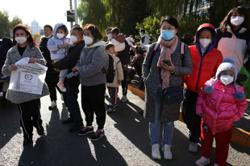When an allergy becomes life-threatening, a shot of adrenaline (epinephrine) is usually required to help save the person’s life. — Positive Parenting
After returning from a visit to a relative’s house, your baby starts coughing and wheezing.
You remember that she played with a cat at the house you visited earlier; could this be a possible allergic reaction?
An allergy refers to a condition where our body reacts to foreign matter like pollen, dust or animal dander, which is usually harmless or does not cause any reaction in most people.
An allergy can manifest in different forms, such as food allergies, atopic dermatitis, hay fever or allergic asthma.
Approximately 30-40% of the world population has an allergy.
An overreaction
An allergy happens when our immune system overreacts to the foreign matter (allergen) by producing immunoglobulin E (IgE) antibodies.
These antibodies then bind to the allergens that then trigger mast cells (a type of immune cell) located in the skin, airways and gut to release histamine and numerous other chemicals that cause the allergic reaction.
Some common allergens that can trigger an allergic reaction are:
- Airborne allergens, e.g. pollen, animal dander, dust mites and mould
- Certain foods, e.g. peanuts, wheat, soy, fish, shellfish, eggs and cow’s milk
- Insect stings, e.g. bees, wasps, fire ants
- Latex or other substances that come in contact with the skin
- Medications, e.g. antibiotics, anticonvulsants, painkillers like non-steroidal anti-inflammatory drugs (NSAIDs), chemotherapy drugs.
The allergic symptoms depend on the allergens and the site it triggers.
An allergic reaction can affect the airways, sinuses and nasal passages, skin, or digestive system, and range from mild to severe.
Here are the symptoms based on several types of allergies or allergy-related conditions:
- Food allergy
Swelling of the lips, tongue, face or throat
Hives
Nausea and vomiting
Abdominal pain, diarrhoea (may be bloody)
Anaphylaxis (a severe, life-threatening reaction)
- Atopic dermatitis (eczema)
Itchy skin
Reddened, peeling skin
- Hay fever (allergic rhinitis)
Sneezing
Runny, stuffy nose
Itchy nose, eyes or roof of the mouth
Watery, red or swollen eyes (conjunctivitis)
- Drug allergy
Hives
Itchy skin
Rash
Facial swelling
Wheezing
Anaphylaxis
- Allergic asthma (asthma triggered by airborne allergens)
Coughing
Wheezing
Shortness of breath
Breathing difficulty
Chest tightness
Sometimes, an allergic reaction can cause a severe and life-threatening illness known as anaphylaxis, with symptoms like:
- Loss of consciousness
- Decreased blood pressure
- Severe shortness of breath
- Lack of oxygen
- Skin rash
- Light-headedness
- Nausea and vomiting
This is a medical emergency and will require immediate medical attention!
Prevent and control
Here are the ways we manage allergies in our children:
Take steps to prevent contact with known triggers as best as you can.
For example, don’t allow your child to play with cats if they are allergic to cat dander.
This will alert others of your child’s condition in case of a severe reaction when you’re not around.
Medications like antihistamines, decongestants, nasal sprays and asthma medications can help manage the symptoms when an allergic reaction happens.
For children with a history of severe allergic reaction and anaphylaxis, emergency adrenaline (also known as epinephrine) shots must be made readily available.
It is an easy-to-use device to quickly deliver medical adrenaline in case of a severe allergic reaction.
Make sure you know how to properly administer the shot to your child.
If you suspect that your child has an allergy, don’t fret.
Talk to your child’s doctor to properly diagnose the condition and devise a management and treatment plan.
With the right step, even an allergy wouldn’t hinder your little one’s bright future!
Dr Patrick Chan is a consultant paediatric respiratory physician. This article is courtesy of the Malaysian Paediatric Association’s Positive Parenting programme in collaboration with expert partners. For further information, please email starhealth@thestar.com.my. The information provided is for educational and communication purposes only, and it should not be construed as personal medical advice. Information published in this article is not intended to replace, supplant or augment a consultation with a health professional regarding the reader’s own medical care. The Star does not give any warranty on accuracy, completeness, functionality, usefulness or other assurances as to the content appearing in this column. The Star disclaims all responsibility for any losses, damage to property or personal injury suffered directly or indirectly from reliance on such information.





